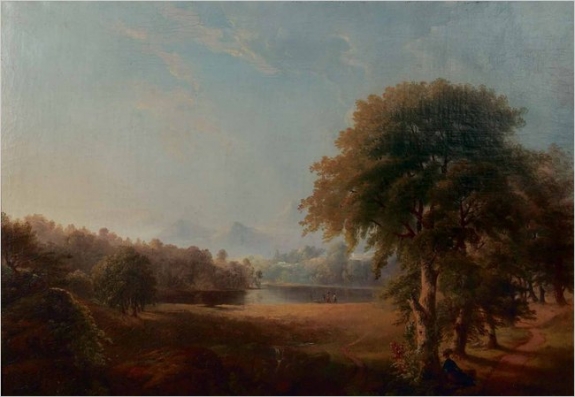Misinformation has spread widely about Robert S. Duncanson, an African-American painter. Before and during the Civil War he specialized in portraits of abolitionists and landscapes as exotic as Roman ruins and Kashmir glades. Art historians rediscovered him in the 1920s, but soon muddied his biography with legends and typos.
His father has often been described as a white Scottish-Canadian who gave the painter the middle name Scott. But in truth Robert Seldon Duncanson descended from freed slaves in Virginia, and his only white ancestor was probably a great-grandfather who owned a plantation.
Joseph D. Ketner II, an art history professor at Emerson College in Boston, has been scouring archives and trying to correct the Duncanson record for three decades. The battle can be tiring; the fictitious Scottish back story reappeared in a newspaper last year.
“I wish people would do their homework,” Mr. Ketner said in a recent phone interview.
He has gathered 17 of Duncanson’s works, most of them recently discovered, for an exhibition at the 1810s home of one of the painter’s role models, Thomas Cole. Through Oct. 30, “Robert S. Duncanson: The Spiritual Striving of the Freedmen’s Sons” fills an upstairs bedroom at Cole’s house, Cedar Grove, now a museum overlooking peaks and valleys in Catskill, N.Y.
The exhibition catalog reproduces a newspaper ad that Duncanson posted as a teenage house painter on the outskirts of Detroit, promising “to do work in the most superior style, and to use the best and genuine materials.” He spent most of his career in Cincinnati; white patrons there helped pay for his travels in Europe and Canada.
Each trip “sheds a new light over my path,” he wrote to a friend in 1854. Seeing thousands of other painters’ landscapes “enabled me to judge of my own talent,” he explained.
“I do not feel discouraged,” he added.
In depicting snowy peaks, waterfalls and ruined temples, Duncanson subtly expressed outrage at racism. Tiny figures of black slaves and American Indian hunters labor in the foregrounds. He most likely meant his tableaus of crumbling Roman monuments as a “cautionary tale” for Southerners, about the doom that has awaited slaveholding societies, Mr. Ketner writes in the catalog.
Duncanson also produced explicitly abolitionist paintings for a panorama about 600 yards long. It showed cruel conditions for African-Americans at sugar plantations and auctions and on trade ships. The canvas, now lost, was unfurled at theaters, while a narrator condemned the South as “the land of the free, and the home of the slave.”
During the Civil War “Duncanson began to suffer from dementia that led to violent outbursts, delusions and hallucinations,” Mr. Ketner writes. The painter died at a sanitarium in 1872 at 51. The illnesses may have resulted from lifelong exposure to hazardous paint. “His behavior in his latter years is consistent with lead poisoning,” Mr. Ketner said.
About 250 of Duncanson’s paintings have turned up, and Mr. Ketner hears about potential new discoveries every few weeks. Among the works at Cedar Grove are a riverfront scene that the Michael Rosenfeld Gallery in Manhattan bought for $47,500 at Christie’s in New York in 2009, and a depiction of a rocky passageway that private collectors acquired for $45,600 at Swann Auction Galleries in Manhattan in February.
In October Swann will offer a Duncanson scene (estimated at $60,000 to $90,000) with boaters gathered at a grassy lakeshore. The foreground glade looks vaguely English, while craggy mountains in the background resemble the Alps.
“It has a combination of his devices,” said Nigel Freeman, the director of Swann’s African-American fine art department. “It’s not any particular place.”



